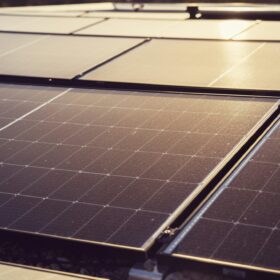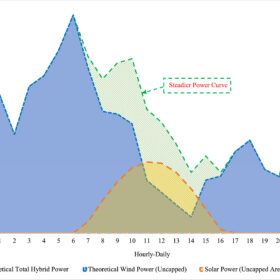California’s electricity generation landscape is undergoing a notable shift, with solar generation rapidly increasing while natural gas output steadily declines. Although natural gas generation still provides more electricity than any other single source in the state, the generation mix dynamics are changing rapidly.
According to data analyzed in the latest Electric Power Monthly release, total electricity generation in California from January through August 2025 reached 140.9 billion kWh. This figure represents an 8% increase compared to the same period in 2020. The primary driver of this growth has been solar energy.
Utility-scale solar power plants generated a total of 40.3 billion kWh in the first eight months of 2025. This nearly doubles the 22.0 billion kWh recorded over the same period in 2020. Year-over-year growth for solar in the first eight months of 2025 was 17%, or 5.9 billion kWh, compared with 2024 data.
In contrast, natural gas supplied 45.5 billion kWh of electricity between January and August 2025, an 18% reduction from the corresponding period in 2020. Generation saw a temporary spike in 2021 due to severe drought conditions that curtailed hydroelectric output, but the downward trend has been consistent since then. The most significant year-over-year decline occurred in 2025, with natural gas generation falling by 9.5 billion kWh, a 17% decrease compared to 2024.
Operational data from the California Independent System Operator (CAISO) provides further insight into the daily operational changes. Natural gas generation consistently decreases during the midday hours between noon and 5:00 p.m. when solar generation peaks. In May and June, solar generation within those hours increased from 10.2 GW in 2020 to 18.8 GW in 2025.
Energy storage is also playing a critical role in displacement. During peak evening hours of 5:00 p.m. to 9:00 p.m., generation from batteries—largely charged by excess midday solar—rose from an average of less than 1 GW in May and June 2022 to 4.9 GW in 2025, effectively displacing traditional natural gas generation during these high-demand times.

This content is protected by copyright and may not be reused. If you want to cooperate with us and would like to reuse some of our content, please contact: editors@pv-magazine.com.









By submitting this form you agree to pv magazine using your data for the purposes of publishing your comment.
Your personal data will only be disclosed or otherwise transmitted to third parties for the purposes of spam filtering or if this is necessary for technical maintenance of the website. Any other transfer to third parties will not take place unless this is justified on the basis of applicable data protection regulations or if pv magazine is legally obliged to do so.
You may revoke this consent at any time with effect for the future, in which case your personal data will be deleted immediately. Otherwise, your data will be deleted if pv magazine has processed your request or the purpose of data storage is fulfilled.
Further information on data privacy can be found in our Data Protection Policy.